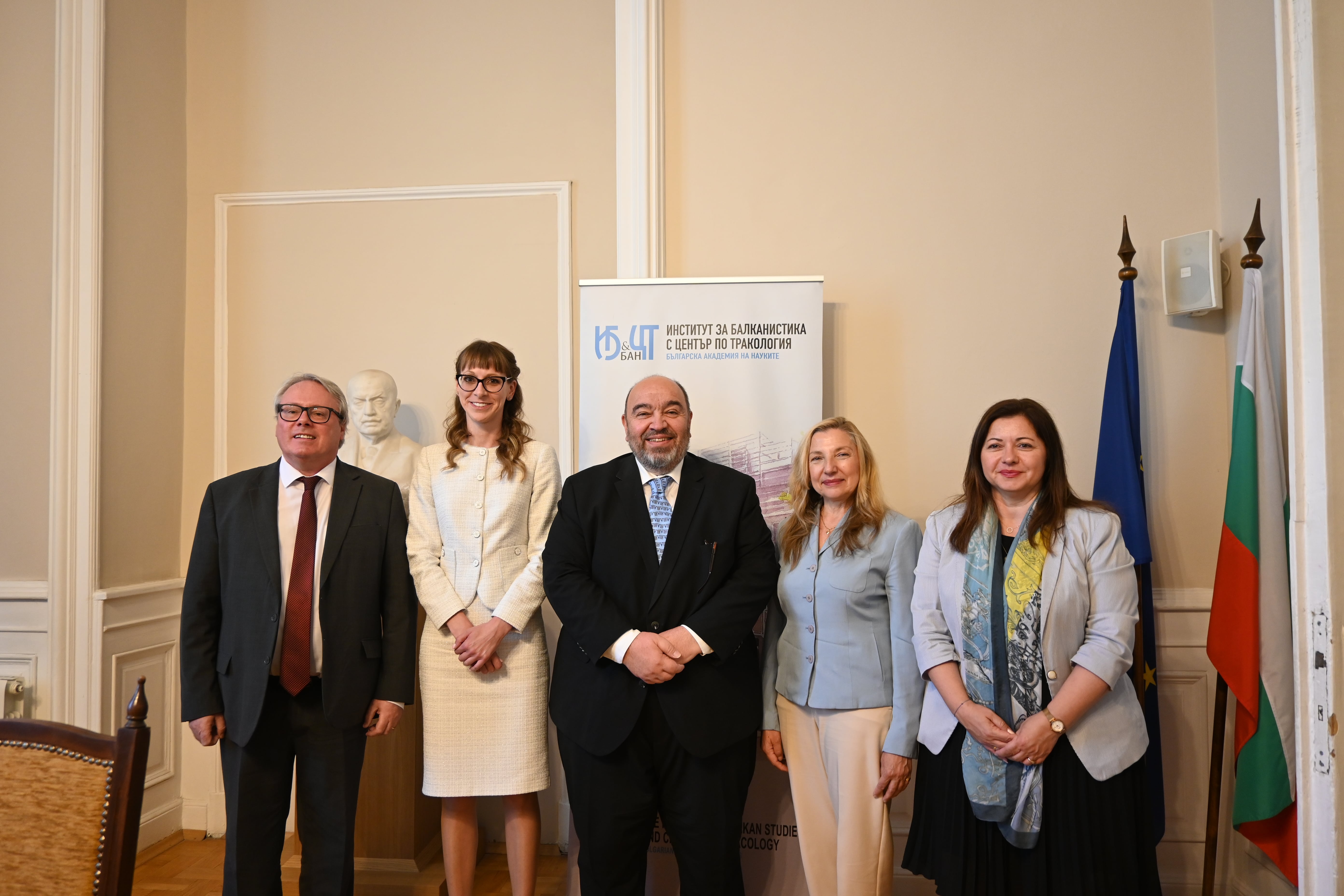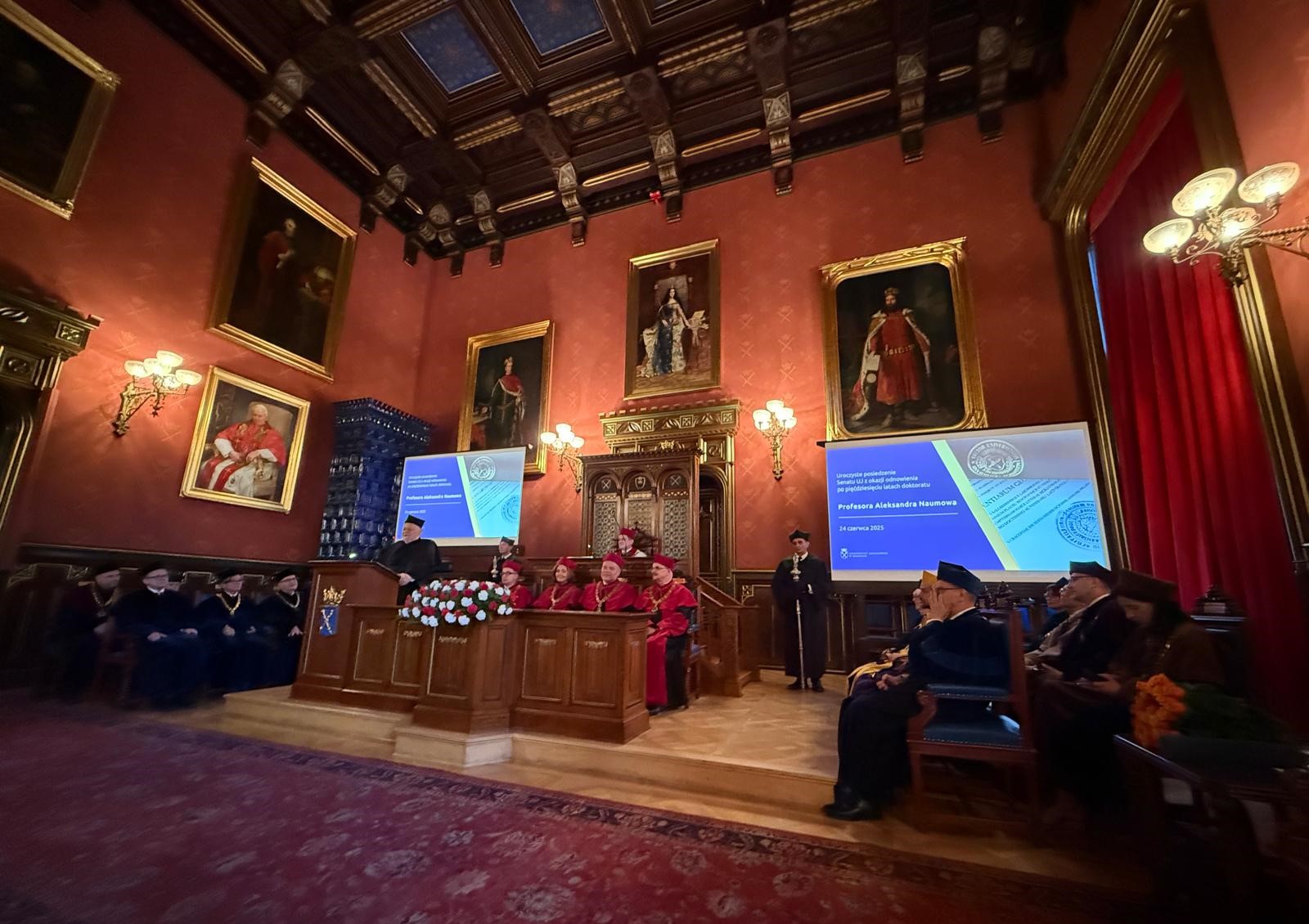Characteristics of the Political Model of Fascism
Contemporary historical, sociological and political science (Juan Linz, Stanley Payne, Giorgio Einaudi, Roger Griffin, Robert Paxton, etc.) concurs on the main features of fascism and its essence.
Fascism is a general term for a far-right political phenomenon. With a certain degree of conditionality and approximation, German National Socialism can be added to this notion.
Fascism is a European phenomenon which originated in the years immediately after the First World War. In individual European countries, it had its own distinctive features resulting from local conditions, and the major problems faced by the society concerned.
Zeev Sternhel outlines three phases in the development of fascism:
- fascism as an idea
- fascism as an organization
- fascism as a regime
Fascism as an idea, respectively as an ideology, had been widespread in Europe since mid 1919. Fascist ideology is anti-liberal. It rejects the existing party-parliamentary system and the principles of political and economic liberalism. It is anti-communist and anti-conservative. Fascist parties, movements and regimes declare themselves revolutionary and modernist. In general, fascist formations are xenophobic, and many of them (not all!) are anti-Semitic. When one talks about fascism, it should be pointed out that fascist ideology is not only destructive. On the contrary, fascism makes great efforts to build a positive image of itself by promising a conflict-free future of labour protection. It promises to eliminate the contradictions between labour and capital, the poor and the rich. It stands up for social policy, proclaims equal opportunities for all. Fascism promotes economic prosperity, large-scale construction and public works, increasing the quality of life and a vision of a prosperous state and society in a happy future. Fascism also emphasized the restoration of national pride and dignity and the righting of wrongs committed against the defeated peoples of the First World War. Individual rights and freedoms are fully subordinated in the name of national interests. In general terms, fascist ideology, along with thesis of the ascendancy of the nation, also elevates the ideas of the establishment of social justice.
The emergence of a fascist party gives organisational structure to the fascist idea and helps shape fascist ideology. Very often, the party is built on the principles of a paramilitary structure. A party militia is formed in association with it, by means of which fascist ideas are aggressively disseminated in society. This structure also opposes the actions of other radical anti-democratic parties, mainly from the far-left political spectrum. In the 1920s and 1930s, similar fascist organizations emerged in almost all European countries (even Switzerland), including some Russian immigrant communities.
The fascist regime can be seen as the highest stage of the development of fascism. It is a regime in which there is a single, monopoly party (the respective fascist party in power), led by a leader with total power in the country.
According to fascist ideology and organization, the state, led by the fascist party, stands above everything. It is universal and comprehensive. It claims to eliminate social and economic differences. It is built on the professional or corporate principle. Certain fascist ideologues talk about authoritarian democracy or authoritarian rule of law. Society is restructured and entirely in the grasp of mandatory monopoly formations, such as youth, professional, and creative unions, etc., which in turn are directly subordinated (or are affiliated) to the party. The ideology of the single party is elevated to the rank of state ideology, and the existence of any other in society is absolutely forbidden. Economic life is strictly subject to party directives and decisions. All media outlets are placed under heavy censorship and are obliged to propagate the ideology of the party-state. They are mainly charged with the essential task of building the social cult of the party leader. Strict supervision of society is carried out both by the repressive organs of the state and by the numerous party structures, including paramilitary organizations created even before the seizure of power. The totalitarian regime, in this case fascism, unlike any ordinary authoritarian regime, not only does not allow the existence of any opposition in society, including within the party, but also requires enthusiastic support of party policy on the part of the local population. At first glance, the fascist regime is statist. It gives the impression of domination of the state in society. However, in actual fact, as with other totalitarian regimes, the fascist state is literally obsessed with the fascist party. All state institutions, including newly established ones, such as the corporate parliament, professional organizations, youth societies, etc., are void of content and literally serve as a camouflage for the one-party dictatorship.
Fascist organizations in Bulgaria
In Bulgaria, in the mid-1920s, fascist ideas began to spread actively, but in relatively limited circles. At the same time, between 1923-1925, organizations influenced by Italian fascism began to appear: the “Kubrat” Bulgarian People’s Union (which, however, did not become a fascist organization); the “Bulgarian Native Defence” Union (SBRZ); and the Union of Fighters /Union of Bulgarians. At the end of the 1920s, a process of “crystallization” of fascist ideas began. The “Native Defence” Union and the Union of Bulgarians declared themselves fascist and adopted a fascist programme and ideology. New formations emerged in the early 1930s. They had an ideology strongly influenced by fascism. Some were openly fascist such as: National Alliance for Political Revival/ National Alliance Fascists (NZF), National Social Movement (NSD), Union of Youth National Legions (later Union of Bulgarian National Legions – SBNL), National Socialist Bulgarian Workers’ Party. The last to be created in chronological terms was the Union of Fighters for the Advancement of Bulgarianness (URB), established in 1936. With the exception of the NSD, none of these formations grew into a mass party, in the manner of their totalitarian counterparts in Italy and Germany. Most of them did not participate in elections. Those who did, such as the Union of Bulgarian Fascists and the National Alliance for Political Revival (fascists), garnered only symbolic results.
In parallel with the emergence of these organizations, the so-called “ideological circles” were formed. In 1927, “Zveno” was established, followed in 1932 by “Young Bulgaria” and in 1934 by “Nation and Politics”. They were influenced both by fascism and to a much greater extent – by the general authoritarian climate spreading at the time in Europe. “Young Bulgaria” and “Nation and Politics” expressed the interests of nationalist authoritarian representatives of the so-called „third generation”, a name given to those born between 1900 and 1918.
To one degree or another, all fascist-inspired organizations were anti-capitalist, and especially opposed to Western democracies and the capitalist economic system. All were in denial of the existing party-parliamentary order and party system in the country. They were all anti-communist. Most, however, did not manifest anti-Semitic attitudes or propaganda (for example, anti-Semitism was not inherent to the NZF, nor the NSD, nor Iliya Stanev’s fraction of the SBNL – Union of Bulgarian National Legions). Some, such as “Zveno”, were not even nationalistic.
The Bulgarian National Defence Union (SBRZ) was anti-Semitic and promulgated anti-Semitism to its youth legionaries. (In the second half of the 1930s, when two wings were formed in the legionary movement, one of them did not exhibit anti-Semitic propaganda.) The three ideological circles did not promulgate anti-Semitic propaganda, despite the presence of a certain negative attitude towards foreigners (and Jews) in some of the texts of the “Young Bulgaria” members. Only the Fighters for the Advancement of Bulgarianness were openly anti-Semitic.
The political regime in Bulgaria established in May 1934
The military coup d ‘état of 19 May 1934 marked the beginning of profound transformations in the state and political model of the time. All parties and political organizations were banned, the parliament was dissolved and the Tarnovo Constitution was repealed. The military regime ruled by decrees and laws. The “Zveno” government to a certain degree resembled a fascist dictatorship. The Cabinet of Kimon Georgiev (May 1934 – January 1935) established a Directorate for Public Renewal and planned to establish professional organizations. The adherents of Zveno, however, did not establish a mass fascist party. They had no intention of creating a public base for their regime, nor did they have a leader. Their power rested entirely on the favour of the military and lasted only a few months. The lack of public support for the government of the “Nineteenth of May”, as well as the serious contradictions among them, enabled Tsar Boris III to gradually remove them from power. In the spring of 1935 a non-party regime was established in Bulgaria with the predominant participation of experts in the government of the country. Most of the (draft) reforms of the government of the “Nineteenth of May” were repealed. The monarch began to play a leading role. Since the renewal of the activities of political parties was not officially allowed, and the Tarnovo Constitution was not restored, historians define the regime in Bulgaria on the eve of World War II as undemocratic. At the same time, it does not bear the marks of extreme authoritarianism, and totalitarianism is out of the question. Opposition to the regime, although very limited, had many opportunities for expression. Parliamentary elections were held in 1938. Despite the formal ban on the existence of parties, the elections were extremely competitive. More than a third of the deputies in the parliament were opposed to the regime. The parliamentary majority itself was unstable. Its support for Georgi Kyoseivanov’s cabinet was not unconditional. During these years, many publications with a range of different ideological orientations continued to be published, including Marxist. Therefore, not only the absence of a ruling party, but also the absence of a state ideology prevents us from talking about the existence of a fascist regime in Bulgaria. The role of the state in the economy was strengthened (this also applies to democracies in the 1930s), but not to the extent typical of totalitarian governments.
A key moment in the years of the Second World War was Bulgaria’s accession to the Tripartite Pact on March 1, 1941. All historians in Bulgaria who study this period know that this act happened after Germany repeatedly urged Bulgaria to abandon its policy of neutrality and to engage with the Axis countries. In the spring of 1941, the Bulgarian government was forced to join the Tripartite Pact. However, even at this moment, the government clearly demonstrated that Bulgaria’s participation in the pact would be quite limited. When the treaty was signed, it was specified that Bulgaria would not take part in direct combat operations. In his first public appearance on his return to the country, the Prime Minister clearly stated that Bulgaria would not change its political system. In other words, a political regime similar to that in Germany or Italy would not be established. So, even after joining the Tripartite Pact in 1941, we cannot say that there was a fascist type of government in Bulgaria. The Cabinet continued to retain its predominantly expert character. The ministers in the government, in addition to lacking any party affiliation, did not demonstrate any adherence to a political ideology.
With regards to the implementation of anti-Semitic legislation and restrictive actions against the Jewish population, the government in Sofia was under constant pressure from German representatives in the country. Many of the German reports mentioned that Bulgarian society does not have any animosity towards the Jews. This widespread attitude largely explains the failure of T. Dannecker’s mission in the spring of 1943 to deport Jews from the old borders of Bulgaria to the camps in Poland. The reaction of broad circles of society, the deputies of the National Assembly, the Bulgarian Orthodox Church and of various public organizations speaks eloquently of the lack of complete state control over society, something very characteristic of any totalitarian regime, including fascist ones. The behaviour of Tsar Boris III shows that the anti-Jewish legislation in Bulgaria was entirely imported from outside. It was conjunctural in character and did not reflect the views of the monarch – the main political player in the country.
At the end of 1940, the “Brannik”(Defender) youth organization was established. In terms of its external appearance, it resembled “Balilla” and the “Hitler Youth”. It should be emphasized, however, that Brannik aimed to strengthen the loyalist feelings of the young people towards the State and its crowned head. On the other hand, the Italian and German analogues represented structures of totalitarian parties and worked towards the consolidation of one-party dictatorships. The projected notion of a “State Party” or “Public Power” was not successful. The plans themselves emphasized the authoritarian rather than the totalitarian nature of the regime. Similar projects for “state parties” were a feature of authoritarian countries – for example, the National Union in Salazarist Portugal. They were merely facades with the aim of legitimizing the regime. Totalitarian systems do not have and do not need such levers. The totalitarian party is not a product of the totalitarian state, but on the contrary.
For a long time, the use of the terms fascist regime and fascist rule referring to the state system in Bulgaria was directly related to the ideological attitude of the Bulgarian Communist Party to the political processes in Bulgaria after the First World War. As in most cases, the Bulgarian Communists fully accepted the theses of the Comintern. In the 1920s, the documents of the Third International began universally to apply the label of “fascist” to events in Europe. Classical liberal governments were declared fascist. The epithet was even used for left-wing and social-democratic formations, as part of the concept of social fascism. Most of the political events in the country during this period were defined by the Bulgarian Communist Party as fascist, such as the coups d ‘état of 9 June 1923 and 19 May 1934, the rule of the Democratic Alliance and of the non-party cabinets. The terms fascism and fascists was applied with great ferocity in the period after 1944. In addition to representatives of the former government, the term was used to apply to the opposition, which was predominantly made up of farmers and social democrats. Unlike the Communists prior to 1941, they had been categorical opponents of Bulgaria’s entry into the Tripartite Pact. The indiscriminate use of the term ‘fascism’ to refer to opponents of the Bulgarian Communist Party, on the one hand, was aimed at their demonization, while at the same time legitimising the repressive actions of the new government. On the other hand, however, it completely deprives the concept of fascism of its academic content. With the establishment of the totalitarian Communist system, these purely partisan assessments of the events of recent Bulgarian history quickly became the only academic concepts in the historical scholarship which by this time was already fully subordinate. The dogmas were so strong that even in the mid-1960s when there was a slight wind of change in Bulgarian historiography, suggesting a new freedom to develop scientifically justified theses, not the slightest revision was allowed with regard to the key notions of “fascism”. The time after 1923 continued to be referred to as ‘the military-fascist dictatorship’, and the period after 1934, as ‘monarcho-fascism’, despite the numerous scientific contradictions and inconsistencies inherent in these designations. However, in certain texts these assessments and characteristics began to crack even before 1989, but not in texts intended for the general public. It was only after the fall of the Communist regime that the definition of fascism in Bulgarian historical science ceased to be used when writing about Bulgarian governments before September 1944. Unfortunately, however, there is still a not insignificant part of the Bulgarian public who still do not understand the academic nature of the problem of fascism in Bulgaria. It is therefore necessary for the guild of historians to come up with a representative opinion on the matter.
In summary, it can be said:
- No leading fascist party was created in Bulgaria with the capability of claiming political power. Although certain fascist formations numbered several tens of thousands of members (SBRZ, SBNL, NSD), their election results were deplorable. The only exception was the National Social Movement (NSD), the party of Al. Tsankov. However, the NSD was formed on the basis of the party masses and the structures of a certain fraction of the ruling party during the period 1923-1931 (Democratic Alliance),
- Fascism never came to power in Bulgaria. Fascist organizations did not participate in the government of the country during the entire period from the 1920s to the autumn of 1944. The regime established after 1934 was not led by a fascist party, it did not emit a fascist leader. Moreover, it was in opposition to the fascist organizations (in 1936 the SBRZ was finally banned, in September 1939 – SBNL and RNB).
- The regime had no fascist ideology. Strangely enough, the regime did not create a systematized ideology at all.
- The rule of the country from 1934 to 1944 was authoritarian, but not fascist. For the entire decade of its existence, the political regime remained entirely non-partisan (typologized, according to the criteria introduced by H. Linz as authoritarian).
Scholars, supporting the statement:
Daniel Vatchkov – Institute for Historical Studies at BAS
Nikolay Poppetrov – The Institute for Historical Studies at BAS
Svetoslav Zhivkov – Sofia University ‘St. Kliment Ohridski’
Georgi Georgiev – The Institute for Historical Studies at BAS
Vesselin Yanchev – Sofia University ‘St. Kliment Ohridski’
Naoum Kaytchev – Sofia University ‘St. Kliment Ohridski’
Iliyana Marcheva – Institute for Historical Studies at BAS
Ivan Ilchev – Sofia University ‘St. Kliment Ohridski’
Lachezar Stoyanov – New Bulgarian University
Angel Dimitrov – Institute for Historical Studies at BAS
Rositsa Lelyova – Institute for Historical Studies at BAS
Momchil Metodiev – New Bulgarian University
Vladimir Stanev – Sofia University ‘St. Kliment Ohridski’
Ivaylo Znepolski – Institute for Studies of the Recent Past
Rumyana Chukova – Institute for Historical Studies at BAS
Milko Palangurski – University of Veliko Tarnovo ‘Sts. Cyril and Methodius’
Angel Dzhonev – Institute for Historical Studies at BAS
Rositsa Stoyanova – Institute for Historical Studies at BAS
Vladimir Zlatarski – Institute for Historical Studies at BAS
Dimitar Gyudurov – New Bulgarian University
Petar Stoyanovich – Institute for Historical Studies at BAS
Aleksandar Grebenarov – Institute for Historical Studies at BAS
[/fusion_text][/fusion_builder_column][/fusion_builder_row][/fusion_builder_container]





